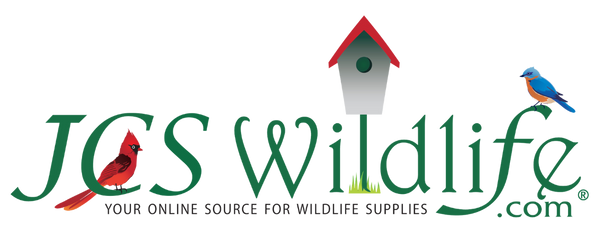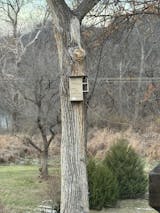1. Introduction to the Nuthatch Bird
The nuthatch bird is a favorite among backyard birders across North America. Known for their acrobatic movements and distinctive calls, nuthatches are small, agile birds that often forage headfirst down tree trunks. Two species commonly seen in North American yards are the White-breasted Nuthatch and the Red-breasted Nuthatch. Each brings its own charm and behavior to the backyard birding experience.
2. White-breasted Nuthatch: The Tree Acrobat
The White-breasted Nuthatch (Sitta carolinensis) is the larger of the two species and is easily recognized by its white face and underparts, black cap, and blue-gray back. These birds are year-round residents in much of the United States and are often seen darting up and down tree trunks in search of insects and seeds.
Key Traits:
- Size: About 5.5 inches long
- Call: Nasal “yank-yank”
- Habitat: Deciduous forests, suburban yards
- Behavior: Often seen climbing down trees headfirst

3. Red-breasted Nuthatch: The Bold Explorer
The Red-breasted Nuthatch (Sitta canadensis) is slightly smaller and sports a rusty-orange breast, white eyebrows, and a black eye stripe. These birds are more common in coniferous forests and are known for their bold personalities and high-pitched calls.
Key Traits:
- Size: About 4.5 inches long
- Call: High-pitched “tinny” notes
- Habitat: Coniferous forests, northern regions
- Behavior: Fearless and curious, often visits feeders

4. Comparing White-breasted vs. Red-breasted Nuthatches
While both species share the nuthatch name and some behaviors, they differ in appearance, vocalizations, and habitat preferences.
|
Feature |
White-breasted Nuthatch |
Red-breasted Nuthatch |
|
Size |
Larger (5.5") |
Smaller (4.5") |
|
Breast Color |
White |
Rusty-orange |
|
Cap |
Black |
Black with white eyebrow |
|
Call |
Nasal “yank-yank” |
High-pitched “tinny” |
|
Preferred Habitat |
Deciduous forests |
Coniferous forests |

Nuthatch Behavior and Feeding Habits
Nuthatches are known for their unique foraging style. Unlike most birds, they often move headfirst down tree trunks, probing bark crevices for insects. They also cache food, storing seeds and nuts in bark or crevices to eat later.
Favorite Foods:
- Black oil sunflower seeds
- Suet
- Peanuts
- Mealworms

6. How to Attract Nuthatches to Your Backyard
To attract nuthatches to your backyard, offer a variety of feeders and food types. These birds prefer feeders that allow clinging, such as suet cages and mesh peanut feeders.
Tips:
- Use suet feeders and peanut feeders
- Offer black oil sunflower seeds
- Install nest boxes for breeding season
- Keep feeders clean to prevent disease

7. Seasonal Behavior and Migration
The White-breasted Nuthatch is mostly non-migratory, staying in its range year-round. The Red-breasted Nuthatch, however, may migrate south during harsh winters, making it a seasonal visitor in some areas.
Seasonal Notes:
- Red-breasted Nuthatches may appear in southern states during winter irruptions.
- White-breasted Nuthatches remain in their territories year-round.

8. Nuthatch Nesting and Breeding
Both species are cavity nesters, often using old woodpecker holes or nest boxes. They line their nests with soft materials and are known to defend their territory aggressively during breeding season.
Nesting Facts:
- Breeding season: Spring to early summer
- Clutch size: 5–9 eggs
- Incubation: ~12 days
- Fledging: ~18–21 days after hatching

9. Fun Facts About Nuthatches
🔹 They Defy Gravity
Nuthatches are one of the few bird species that can walk headfirst down tree trunks. This behavior gives them access to insects and larvae that other birds might miss, making them excellent pest controllers in your yard.
🔹 Nut “Hatchers” by Name
Their name comes from their habit of wedging nuts into bark crevices and then hammering them open with their beaks. This clever technique helps them access food that would otherwise be too tough to crack.
🔹 Red-breasted Nuthatches Use Tree Sap as Defense
Red-breasted Nuthatches have been observed smearing sticky pine resin around the entrance of their nest cavities. It’s believed this behavior helps deter predators like squirrels and other nest invaders. They sometimes even use tools—like bark pieces—to apply the resin!
🔹 They Cache Food for Later
Both species are known to store food in bark crevices, under leaves, or even in the ground. This caching behavior helps them survive during colder months when food is scarce. They have excellent spatial memory to retrieve these hidden snacks.
🔹 They’re Surprisingly Vocal
Despite their small size, nuthatches are quite vocal. The White-breasted Nuthatch has a loud, nasal “yank-yank” call, while the Red-breasted Nuthatch produces a high-pitched, tinny “een-een-een.” These calls are used for communication, territory defense, and mate attraction.
🔹 They’re Loyal to Their Territory
White-breasted Nuthatches are non-migratory and often stay in the same territory year-round. They may even use the same nesting site for multiple seasons if conditions are favorable.
🔹 They’re Not Afraid of Larger Birds
Red-breasted Nuthatches are known for their boldness, often standing their ground against larger birds at feeders. Their assertive nature makes them surprisingly dominant despite their small size.
🔹 They Form Mixed Flocks in Winter
During colder months, nuthatches often join mixed-species foraging flocks, including chickadees, titmice, and woodpeckers. This behavior increases their chances of finding food and staying safe from predators.
🔹 They Have a Unique Flight Style
Nuthatches fly in a bouncy, undulating pattern, similar to woodpeckers. Their flight is short and direct, often between trees or from a feeder to a nearby perch.
🔹 They’re Cavity Nesters with a Twist
While both species prefer natural cavities or old woodpecker holes, they will readily use nest boxes if placed correctly. Red-breasted Nuthatches are particularly picky and may line their nests with fur, feathers, or shredded bark.

10. Conclusion: Why Nuthatches Are Backyard Favorites
Whether you’re watching the bold Red-breasted Nuthatch or the acrobatic White-breasted Nuthatch, these birds bring energy, curiosity, and charm to any backyard. By understanding their habits and preferences, you can create a welcoming environment that supports their needs and enhances your birdwatching experience.



